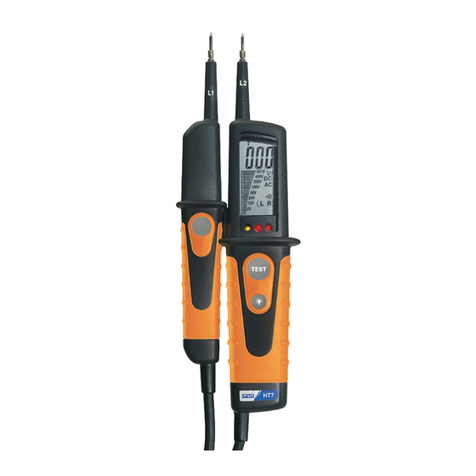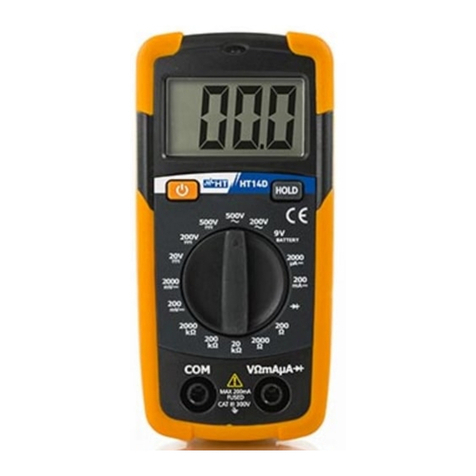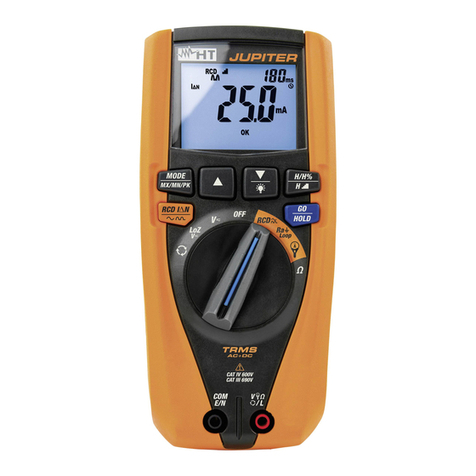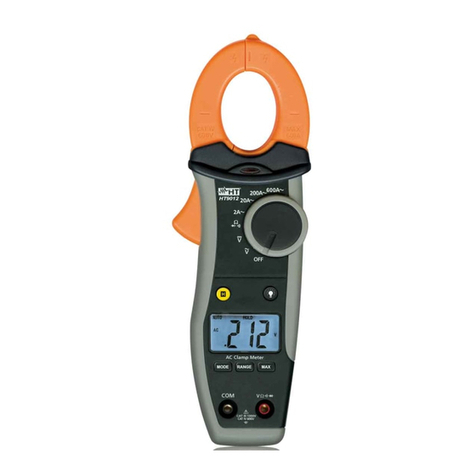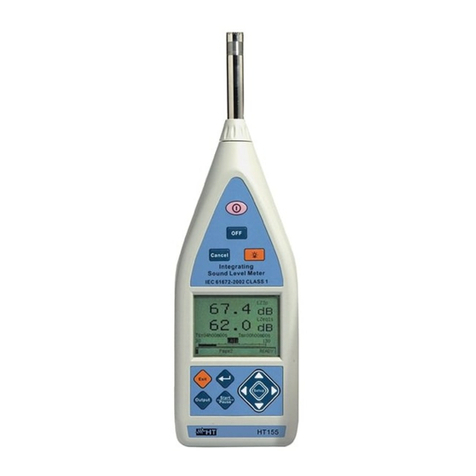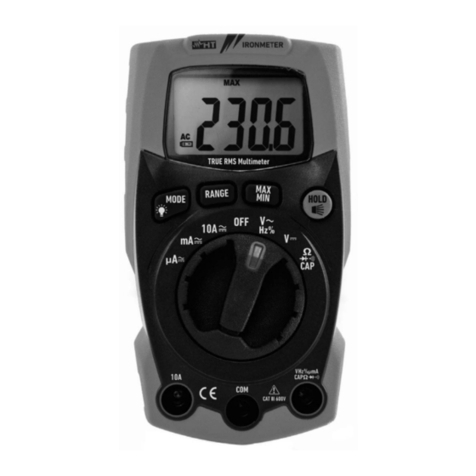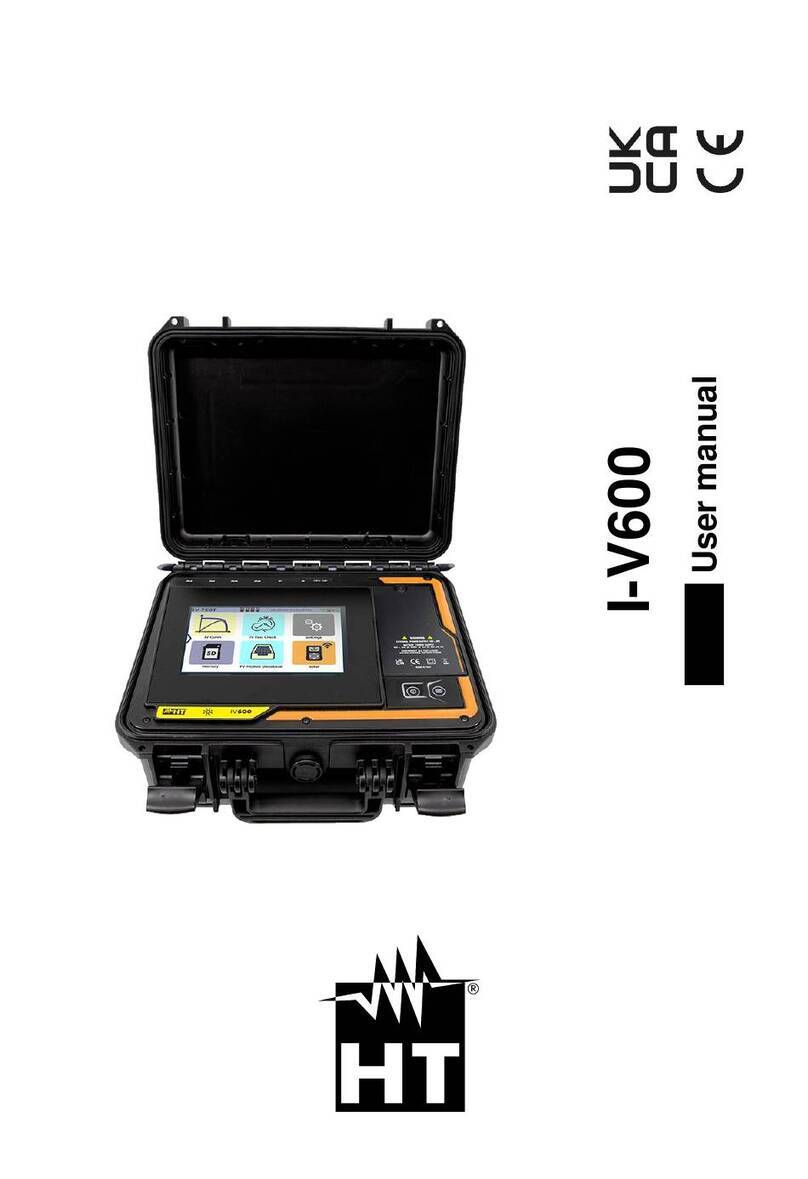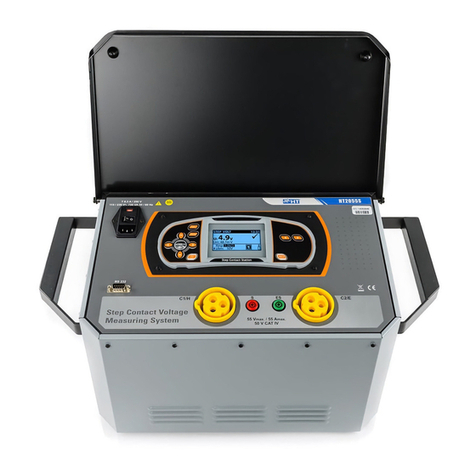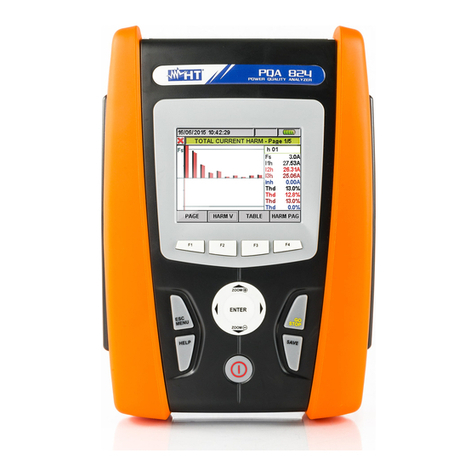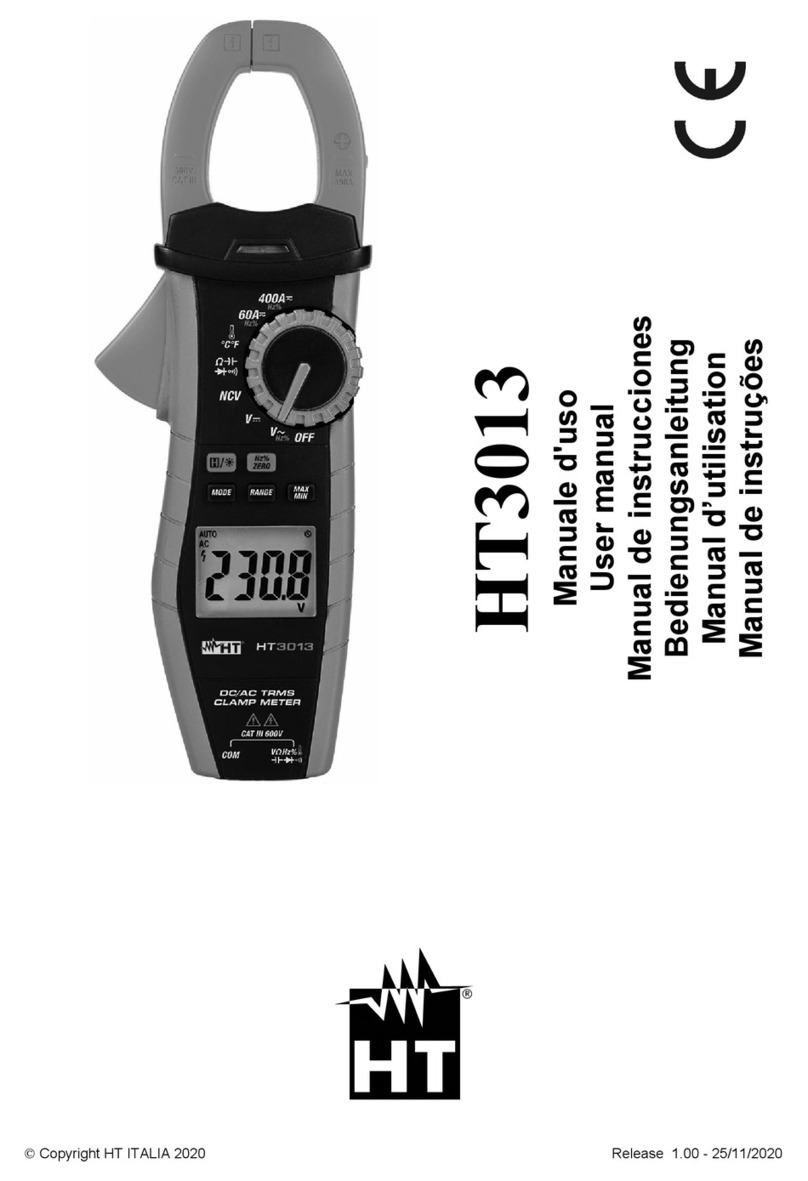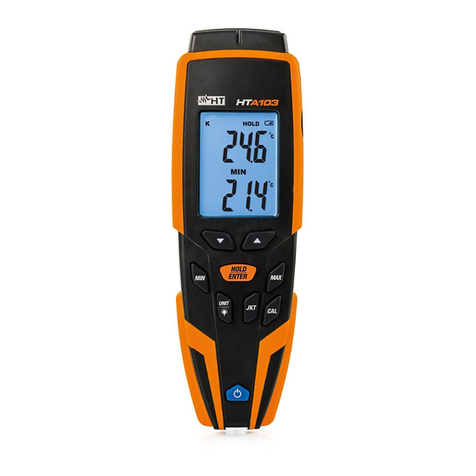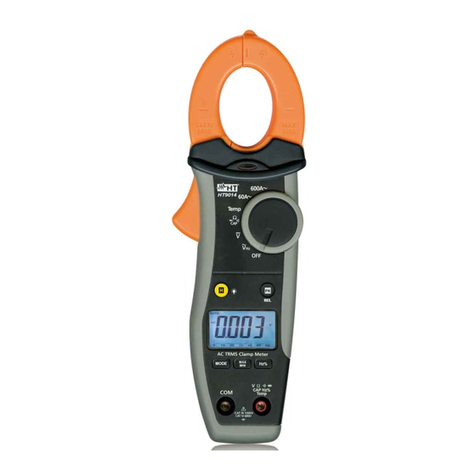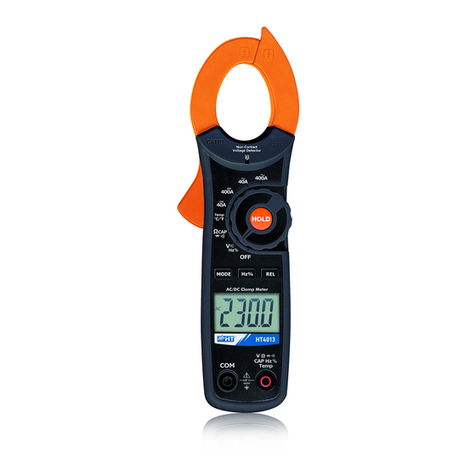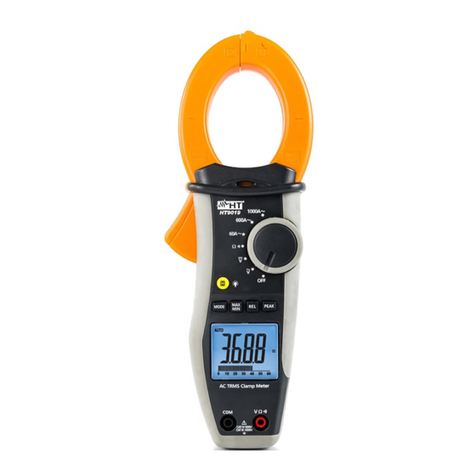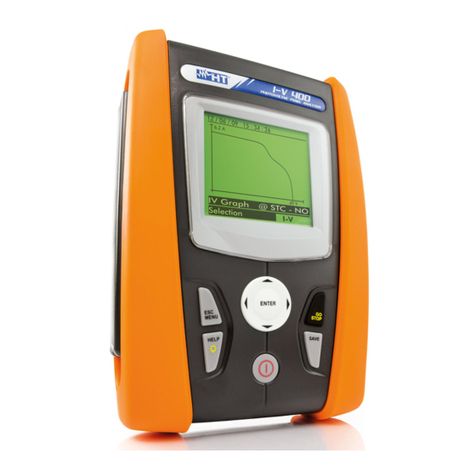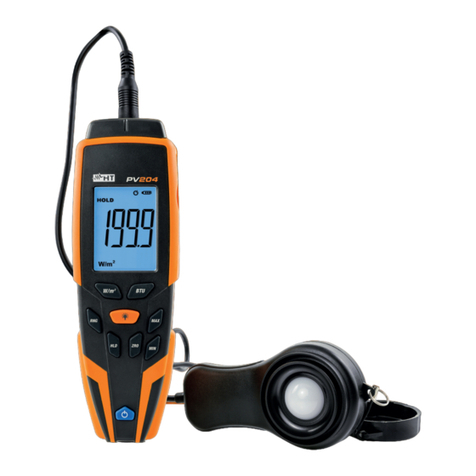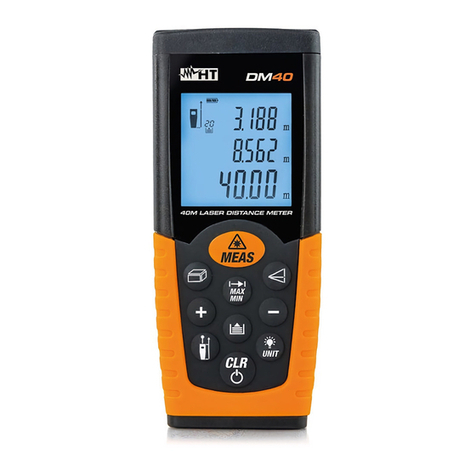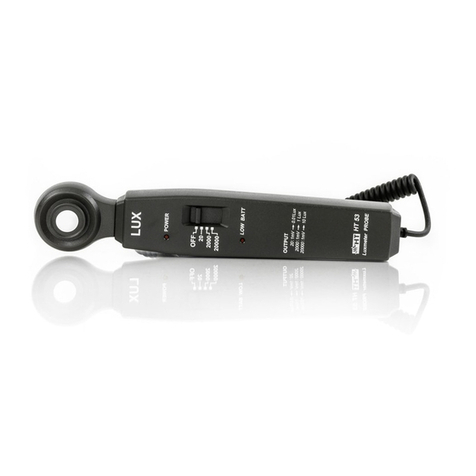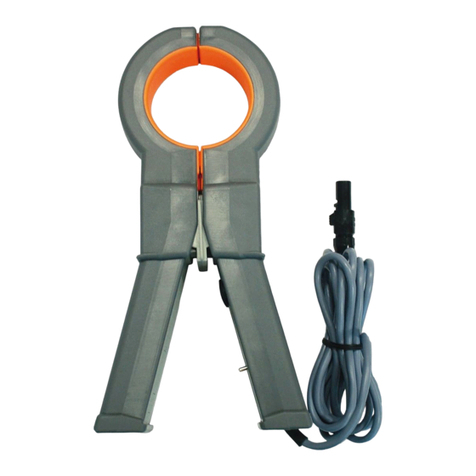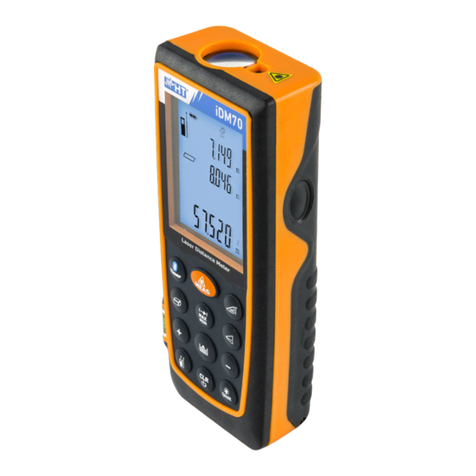HT9020
EN - 1
Table of contents:
1.PRECAUTIONS AND SAFETY MEASURES ........................................................................... 2
1.1.Preliminary instructions .................................................................................................................... 2
1.2.During use ........................................................................................................................................ 3
1.3.After use ........................................................................................................................................... 3
1.4.Definition of measurement (overvoltage) category .......................................................................... 3
2.GENERAL DESCRIPTION ....................................................................................................... 4
2.1.Measuring average values and TRMS values ................................................................................. 4
2.2.Definition of true root mean square value and crest factor .............................................................. 4
3.PREPARATION FOR USE ....................................................................................................... 5
3.1.Initial checks..................................................................................................................................... 5
3.2.Instrument power supply .................................................................................................................. 5
3.3.Calibration ........................................................................................................................................ 5
3.4.Storage............................................................................................................................................. 5
4.OPERATING INSTRUCTIONS ................................................................................................. 6
4.1.Instrument description...................................................................................................................... 6
4.1.1.Description of the controls ................................................................................................................. 6
4.1.2.Alignment marks ................................................................................................................................ 6
4.1.3.Hand protection ................................................................................................................................. 7
4.1.4.Indication of the conventional direction of Current............................................................................. 7
4.2.Function keys description................................................................................................................. 8
4.2.1.F1, F2, F3, F4/OK keys ..................................................................................................................... 8
4.2.2.H/ESC/ key .................................................................................................................................... 8
4.3.Initial screen ..................................................................................................................................... 8
5.OPERATING INSTRUCTIONS ................................................................................................. 9
5.1.Instrument settings ........................................................................................................................... 9
5.2.AC Voltage detection........................................................................................................................ 9
5.3.DC Voltage measurement.............................................................................................................. 10
5.4.AC/AC + DC Voltage measurement............................................................................................... 12
5.4.1.Voltage Harmonics measurement ................................................................................................... 14
5.4.2.Phase Sequence and Phase Conformity ......................................................................................... 15
5.5.DC Current measurement .............................................................................................................. 19
5.6.AC/AC + DC Current measurement ............................................................................................... 21
5.6.1.Current Harmonics measurement.................................................................................................... 23
5.6.2.Dynamic Inrush current measurement............................................................................................. 24
5.7.DC Power and Energy measurement ............................................................................................ 26
5.8.AC/AC+DC Power and Energy measurement ............................................................................... 30
5.9.Resistance and Continuity test measurement ............................................................................... 36
6.MAINTENANCE ...................................................................................................................... 39
6.1.General information........................................................................................................................ 39
6.2.Battery replacement ....................................................................................................................... 39
6.3.Cleaning the instrument ................................................................................................................. 39
6.4.End of life ....................................................................................................................................... 39
7.TECHNICAL SPECIFICATIONS............................................................................................. 40
7.1.Technical characteristics................................................................................................................ 40
7.1.1.Reference guidelines ....................................................................................................................... 42
7.1.2.General characteristics .................................................................................................................... 42
7.2.ENVIRONMENT............................................................................................................................. 42
7.2.1.Environmental conditions for use..................................................................................................... 42
7.3.Accessories provided ..................................................................................................................... 42
8.SERVICE ................................................................................................................................ 43
8.1.Warranty conditions........................................................................................................................ 43
8.2.Service ........................................................................................................................................... 43
9.APPENDIX – THEORETICAL OUTLINE ................................................................................ 44
9.1.Calculation of powers in “AC 1P” mode ......................................................................................... 44
9.2.Calculation of powers in “AC 3P” mode ......................................................................................... 44
9.3.Calculation of powers in “DC” mode .............................................................................................. 44
9.4.voltage and current harmonics....................................................................................................... 45
9.5.Limit values for harmonics ............................................................................................................. 46
9.6.Causes FOR the presence of harmonics ....................................................................................... 46












